So, at the advice of the rangers we met at Doros, we set the alarm at 6 am, snoozed for another 10 minutes, got up and packed up our home and left Doros Crater for the spring. In landscapes like these, it’s not always clear if you understood the directions well enough so you cross your fingers and hope for the best.
After about 30 minutes however, we miraculously arrived at the specific waterhole! We were ecstatic! But… there was not much to see. No animals at all. No rangers either. We were not sure if we were too late or if they still would have to arrive. We thought that we might as well park ourselves somewhere in the vicinity of the spring, have a cup of coffee and wait for the animals and/or rangers to come. And low and behold… as we were having our coffee, Stefaan sees two rangers from the Save The Rhino Trust, Merwin and Didus, walking towards the waterhole and walks out to meet them.
Long story short: they eventually agreed to take us on a rhino-tracking trip. It was a deal made in heaven: they would hitch a ride in Trokkie and follow the dung and spoor and when they would tell us to stop, we would join them further on foot. We drove a few km on narrow rocky tracks and heart stopping loose sandy riverbeds, but Stefaan now got the hang of this so we got through without being stuck or slashing tires.
At a certain moment Merwin had continued walking, while Didus rode with us a short while further, till he told us to park on the side of the road and get our gear to walk. We got our hat and camera gear and followed the two guys as they looked at dung and followed spoor, drifting up mountain slopes, returning to the riverbed and all the time making sure we would always be down wind. Didus was regularly scanning with his binoculars.
And then we saw him: a solitary black rhino standing under a tree. Although he was pretty far away, we could see from his body language that he realised something was up. Merwin explained that their scent is great (that’s why we stayed down-wind), their hearing is sharp, but their eyesight is not good. So I presume that this big boy could hear us, but not really see us. He seemed to make a few mock movements, but you could see that he was more unsure than really agro!
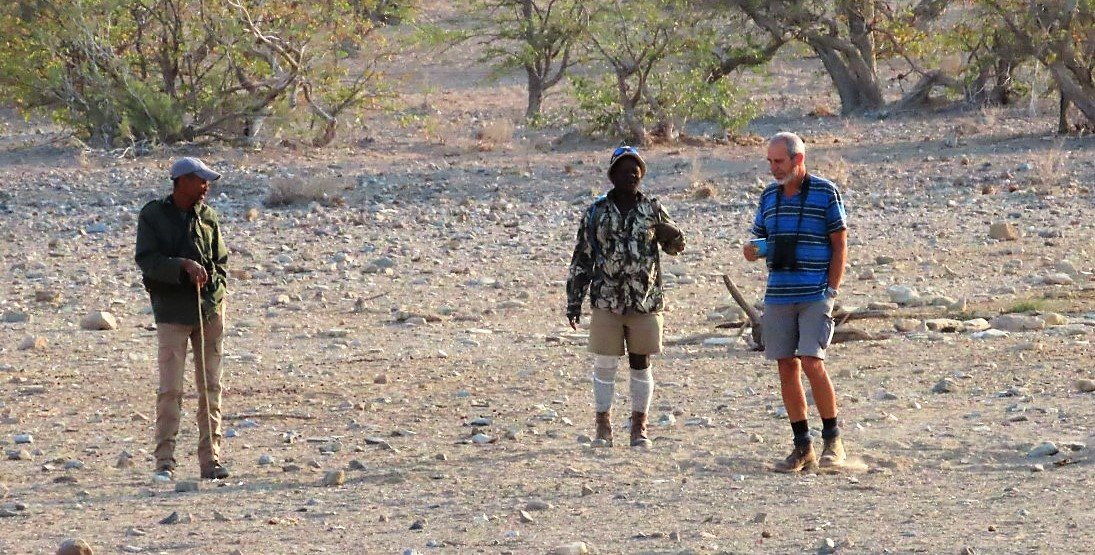
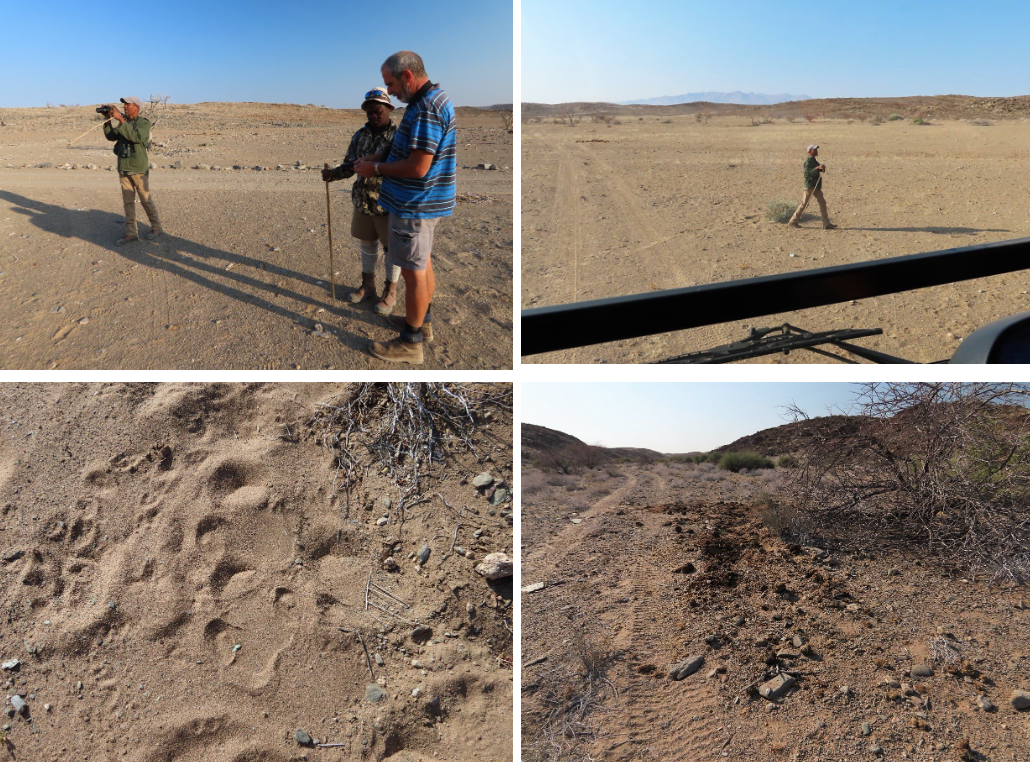
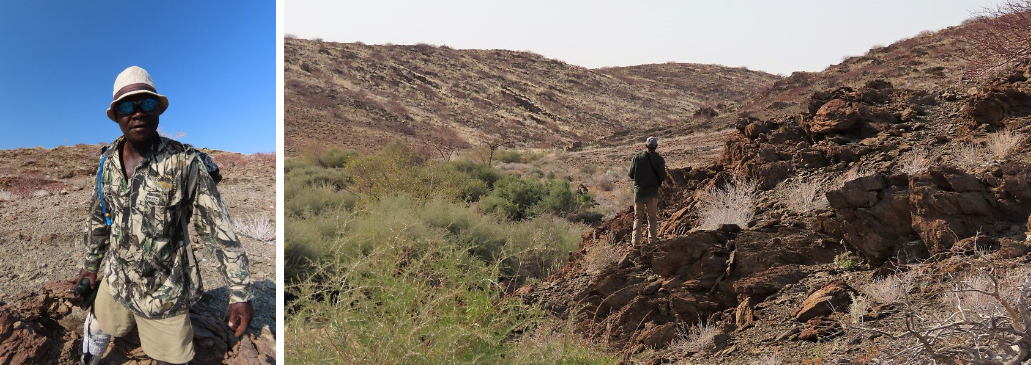
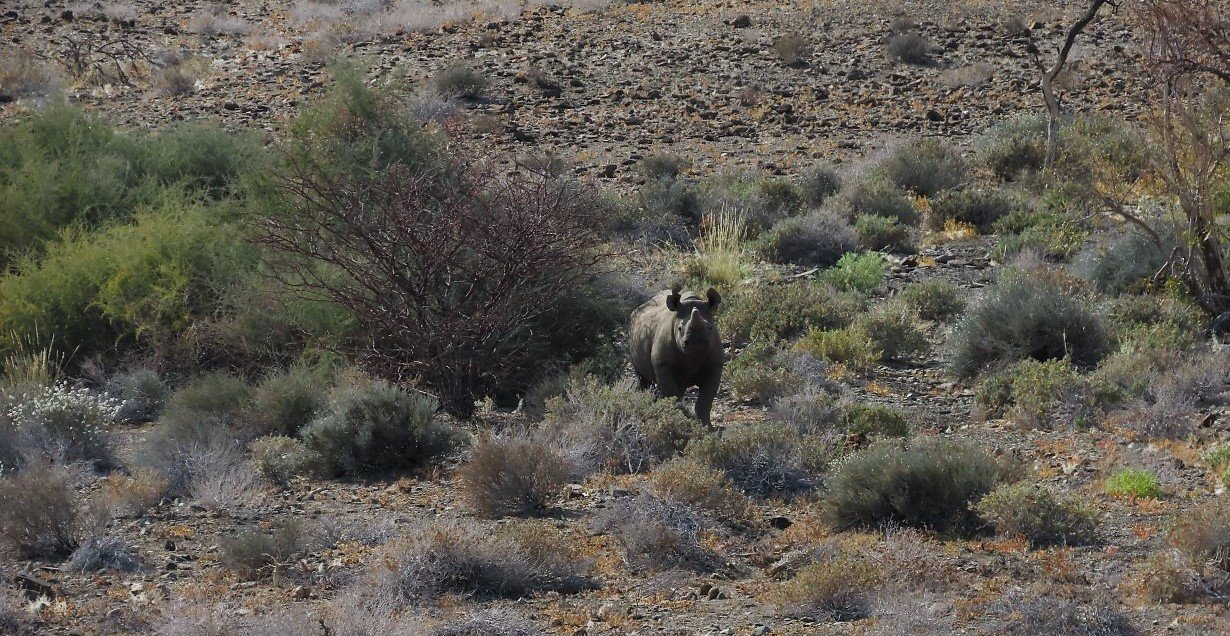
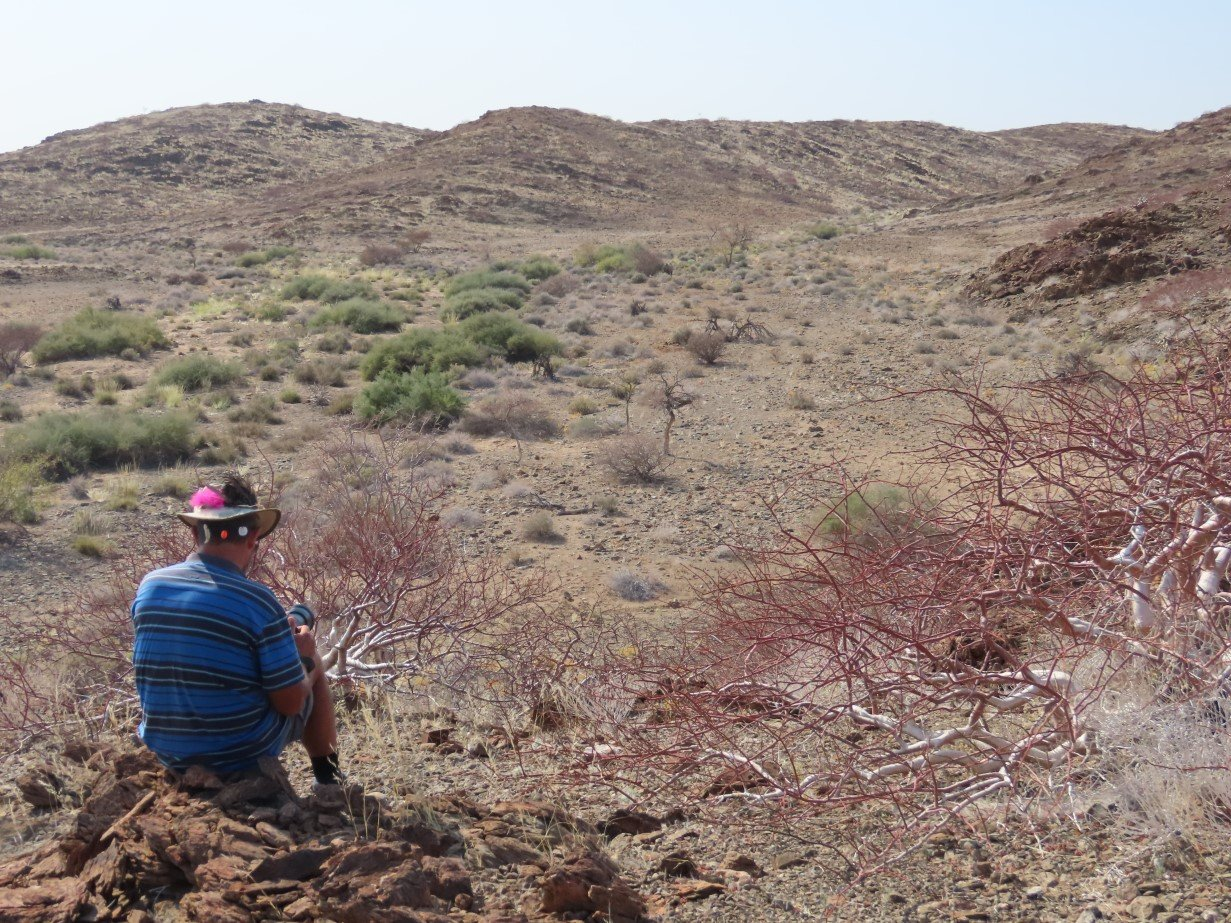
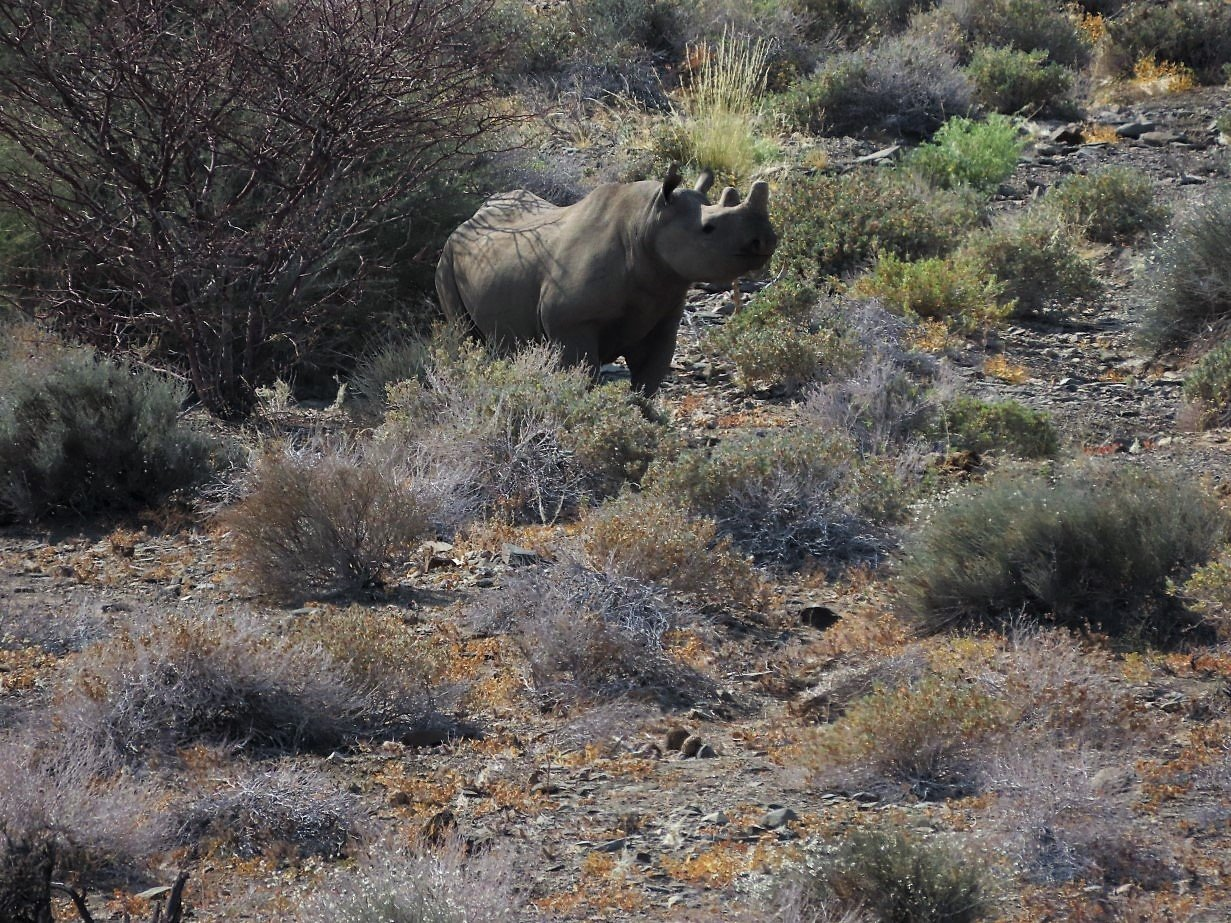
We had our 30 minutes with the rhino and then we walked back to the truck. As we drove back the way we had come, at a certain moment Merwin slapped urgently on the dashboard and pointed to the left. It was our lucky day: more rhino! A mother and calf were standing under a tree a bit further in the field.
We stopped and, following Didus’ orders and directions, we followed him to a higher spot on the side of the hill and had great views of this mom and calf. The two of them were also quite wary of these weird creatures invading their space again. We left them to their feeding and continued our trip. Shortly before we reached the spring again, Didus and Merwin got out to walk back to their camp.
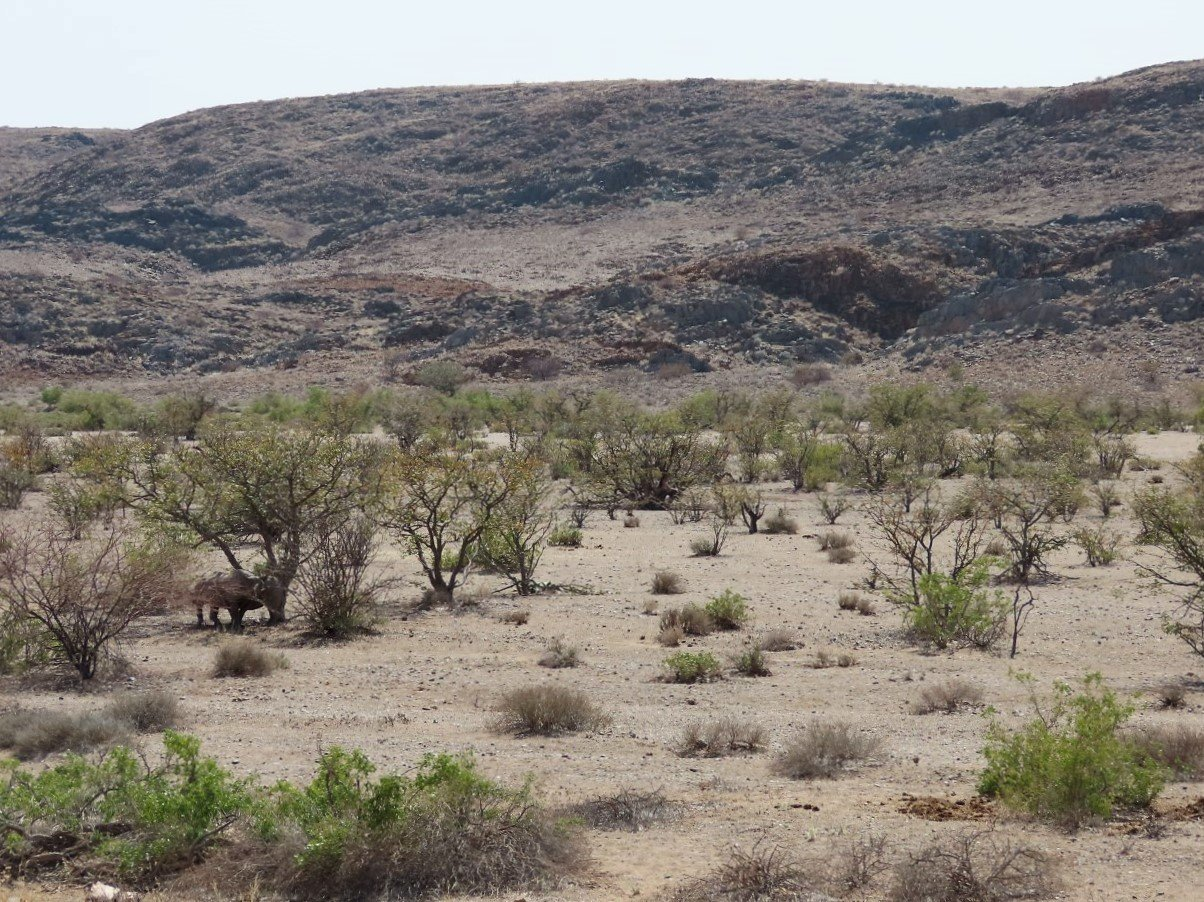
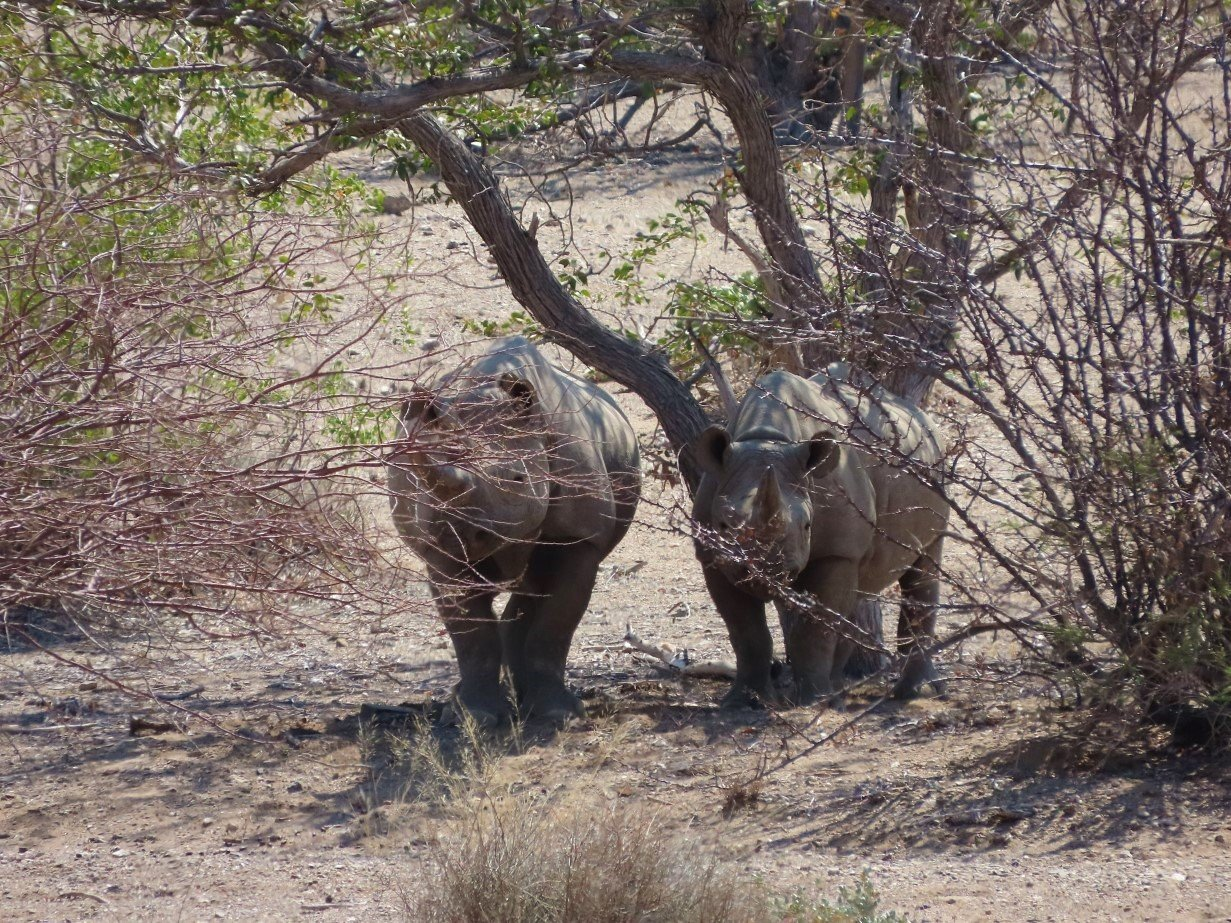
By then it was lunchtime and we decided to find a spot near the spring and wait patiently for the animals to come… which we understood would be at dusk and dawn. We spent our afternoon working and reading and were on standby with cameras for any animal that would show its face.
Although we had high hopes for a real fest of animals at the waterhole, the only ones we saw that afternoon was a committee of vultures. We were already excited when we saw a single one quenching his thirst at the waterhole but shortly after he flew away again. Maybe he went to fetch his mates, because in the next half hour, a whole heap of them landed in their very peculiar and clumsy way, kicking up dust when they reached the ground. They spent about half an hour at the waterhole drinking, chilling in whatever little breeze there was with spread out wings and the odd tussle or two between some.
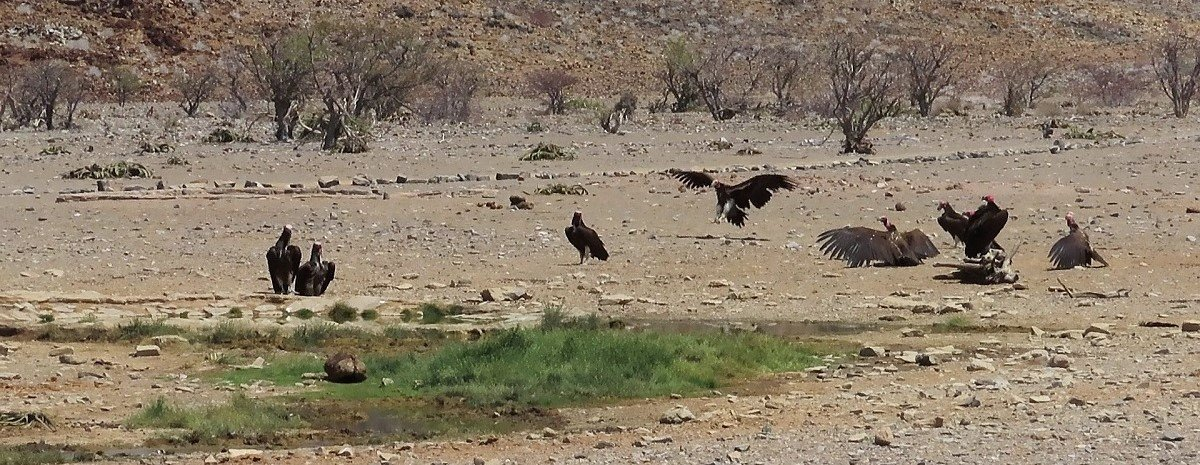
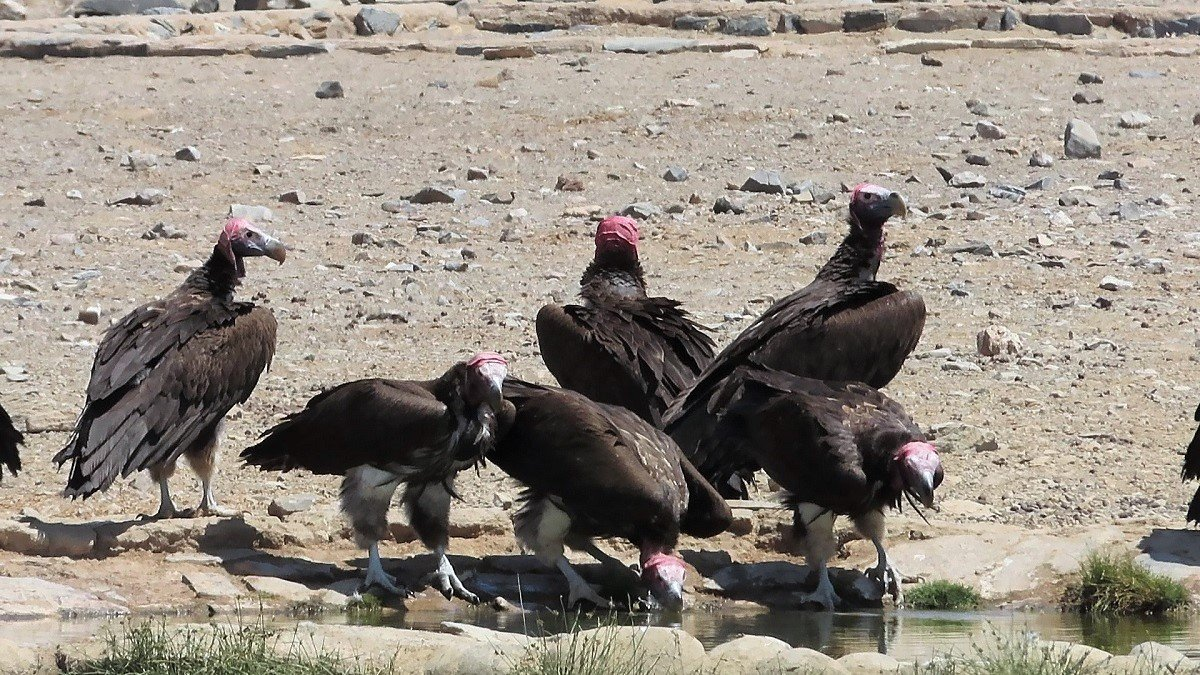
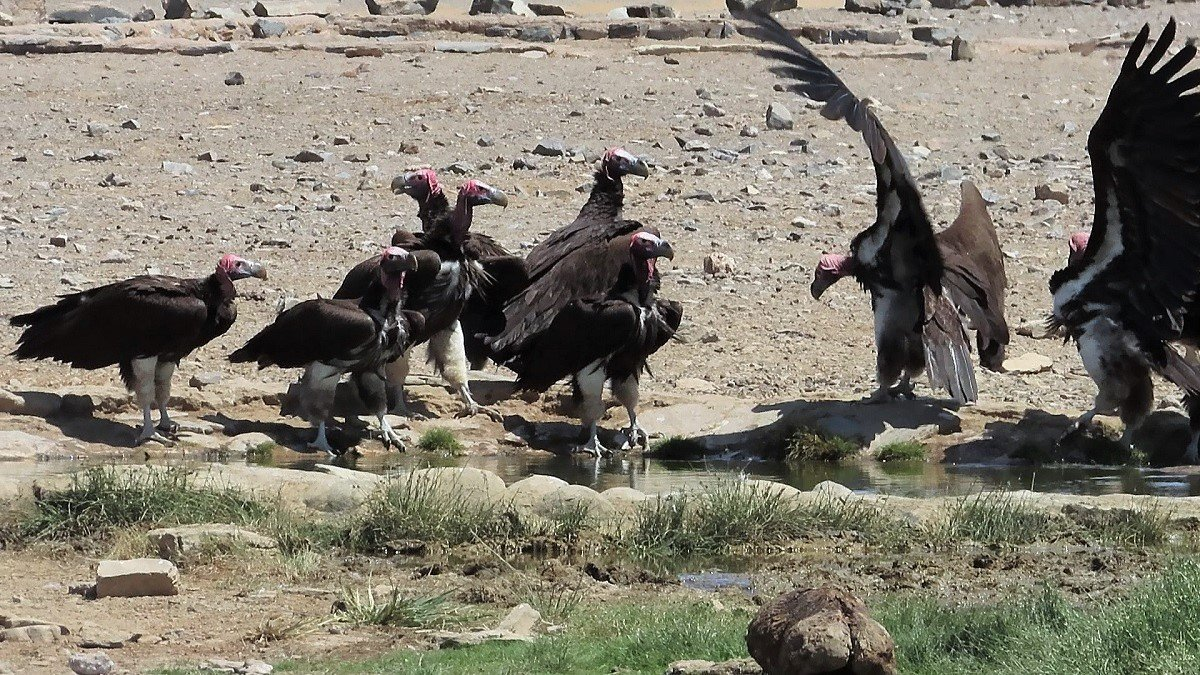
The rest of the afternoon we saw nothing. Close to sundown the ranger of the previous day passed and when he saw us, he asked if we had been rhino-tracking. He was very happy for us when he heard we had seen 3 rhino. By that time it was dark and we didn’t want to switch on light- just in case some animals would show up- and decided on an early night.
When we woke up early the next morning we initially thought that there was nothing happening at the waterhole, but we were lucky: a small dazzle of zebra had come down from the plains to drink. It is interesting that, even when we are parked and still, the animals are still very aware of something different in their natural environment and you could see that the zebra were focused on us and watching us the whole time. A little while later we saw another team of trackers show up at the waterhole for the daily tracking exercise. This was our cue that most probably no more animals would come to the waterhole and we left.
Although the main direction and goal was Khorixa, we had to negotiate our way through very sandy riverbeds and following the gps in the general direction of where we wanted to end up. Thank you for the Explore App… it has done a magnificent job so far!
This would be a trying day for me as we had to cope with soft sand riverbeds. We had done a few sections when the rhino trackers were with us, but now it seemed that riverbeds were the only roads available to get out of this part of the world.
Stefaan got the hang of it to pick up speed, slither and slide and eventually cope with the soft sand pretty ok. I think at only one or two occasions we slowed down too much and then you realise just too late: we’re stuck. Not really stuck, but it needs letting air out of the tires and a whole heap of driving forward and backwards, moving only cm’s at the time, before the wheels find traction again and get us back on the track again! Definitely not my favourite moments. Especially when realising that there is nobody around to help. Luckily we didn’t need the winch.
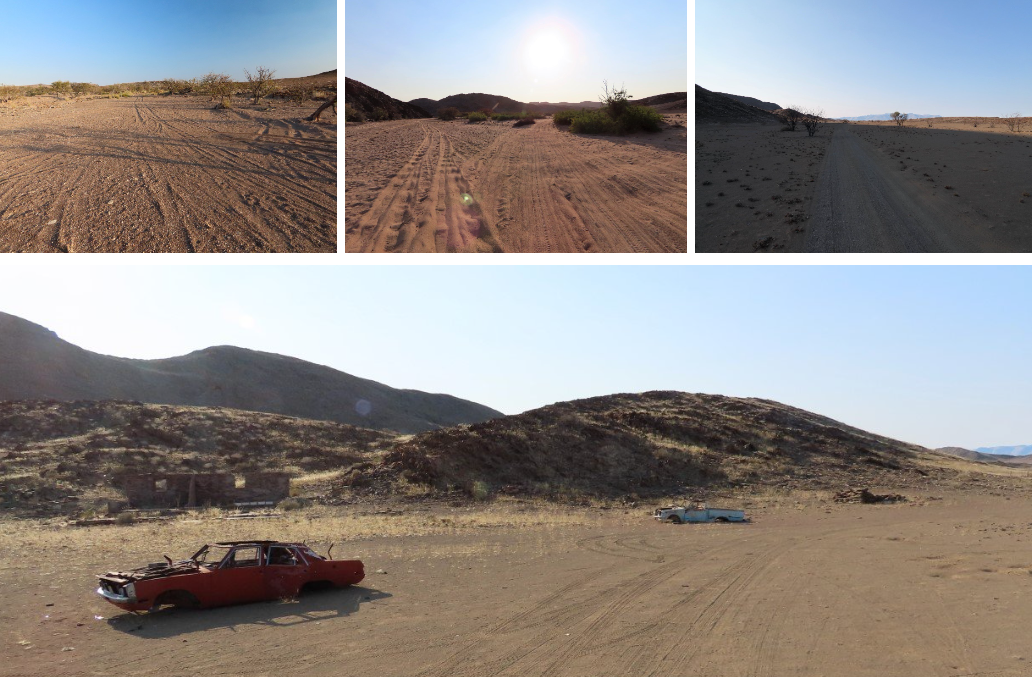
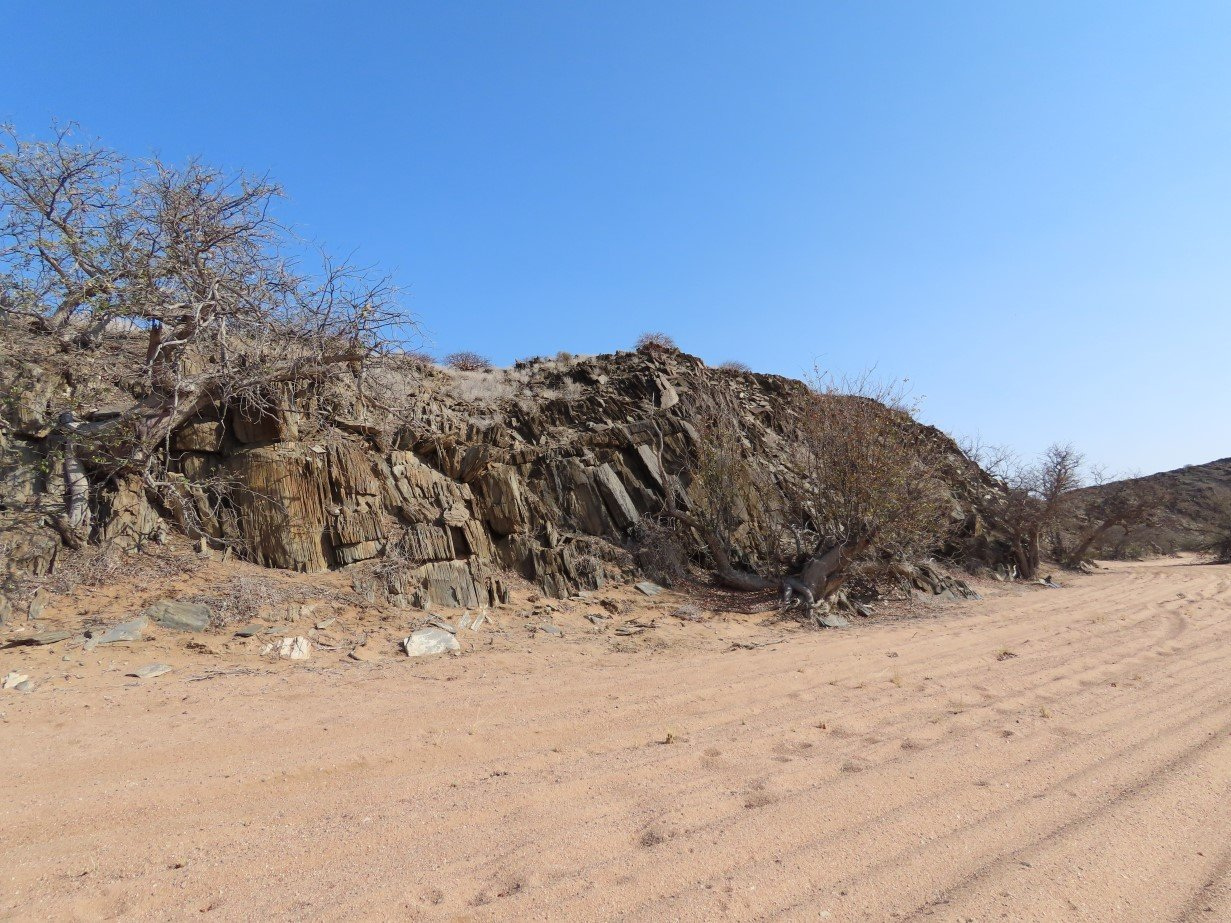
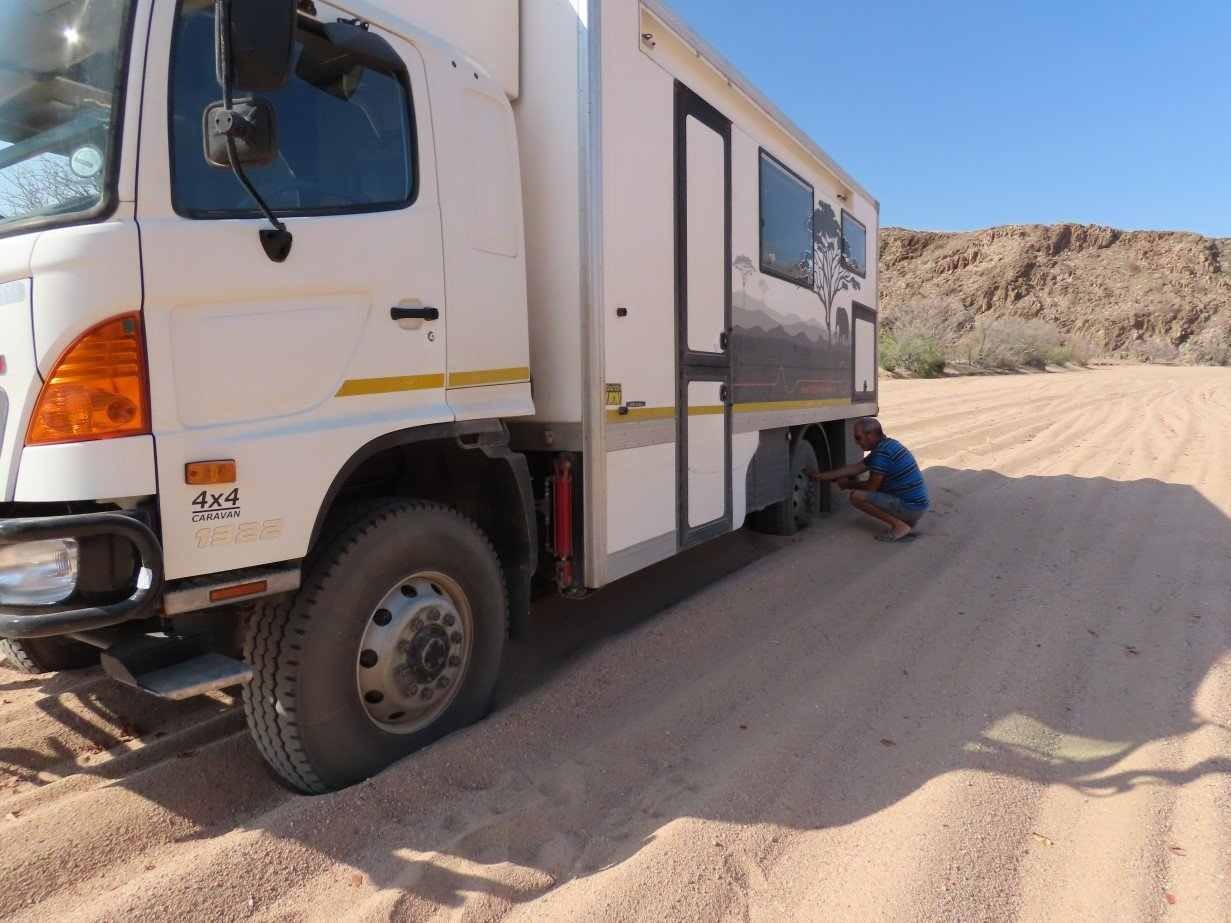
Passing through the various riverbeds we saw lots of giraffe spoor and eventually we saw them: a few wild desert giraffe nibbling at some trees on the plains.
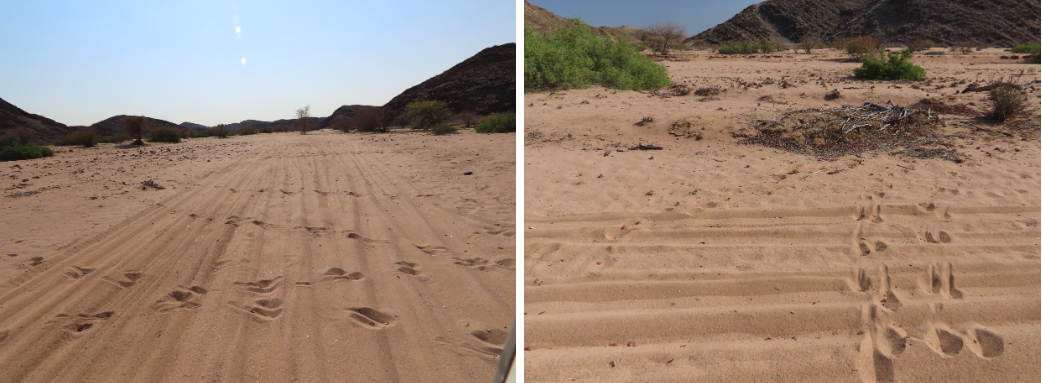
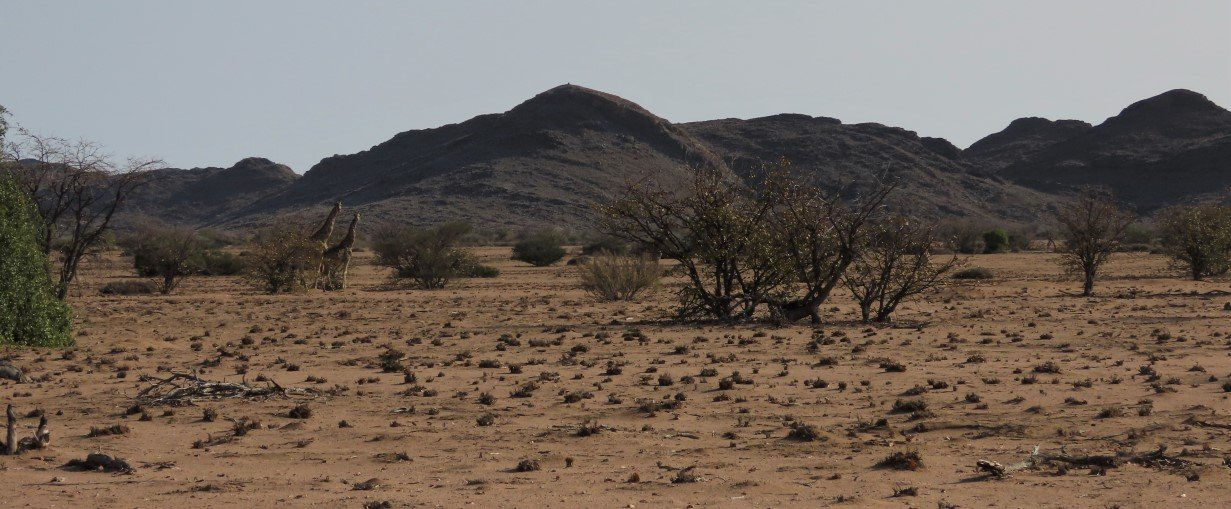
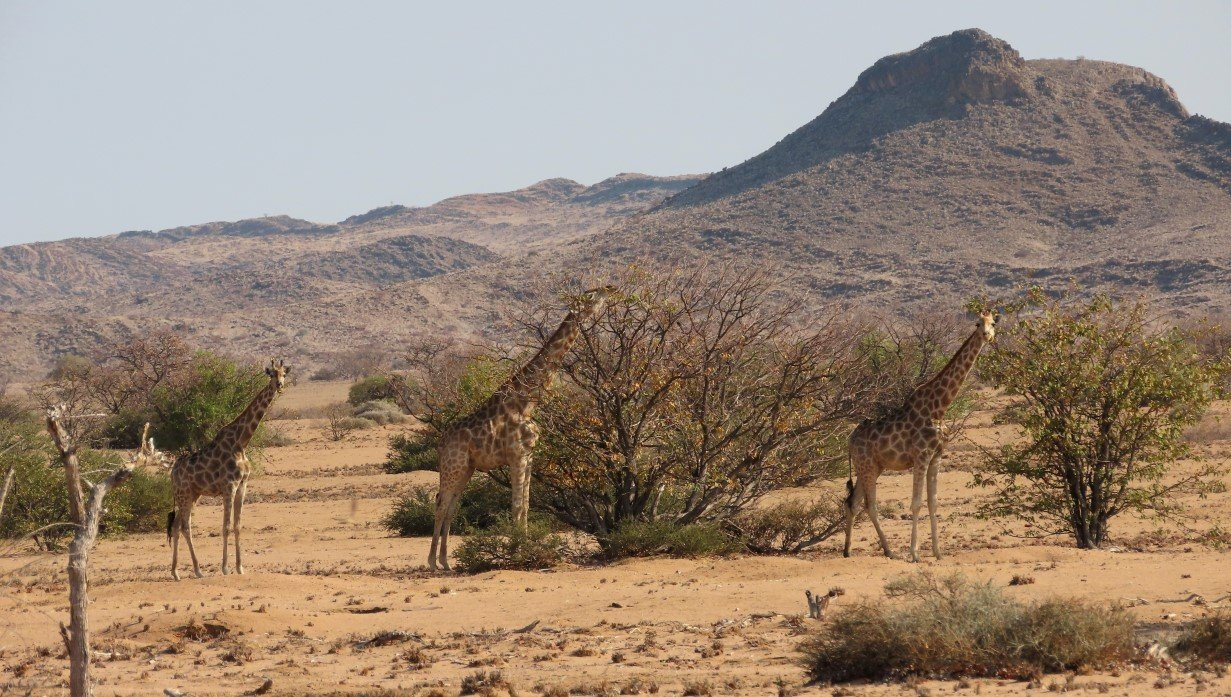
We eventually got out of the riverbed section onto one of the main dirt roads again whereof parts were as deep and soft sand as the riverbeds. It just got the status of being a “more main road”.
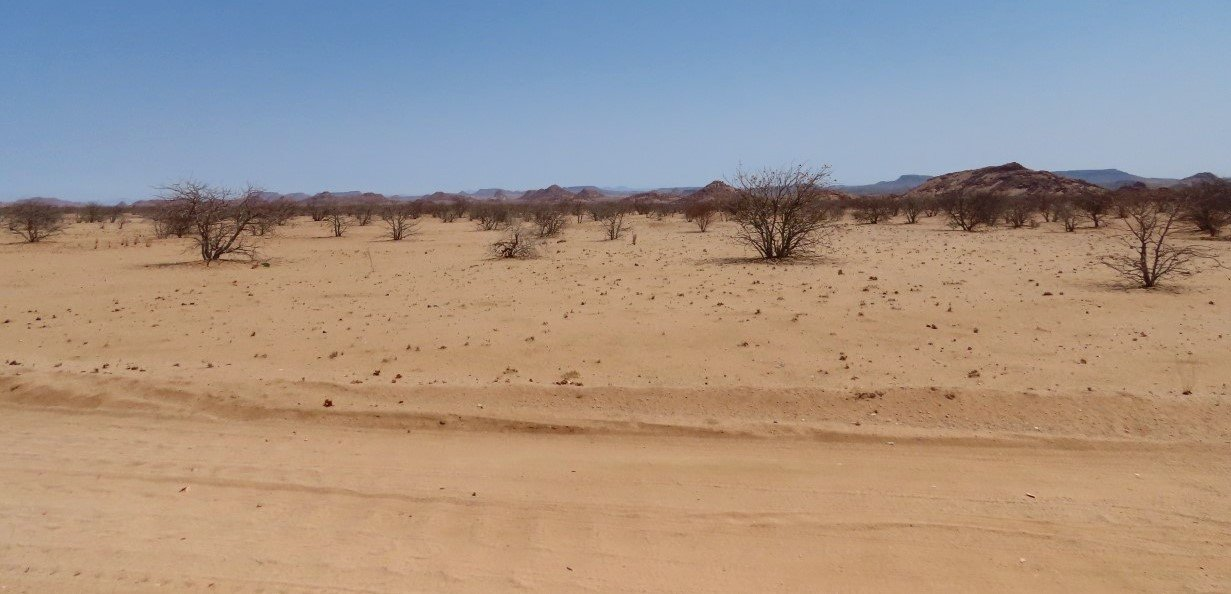
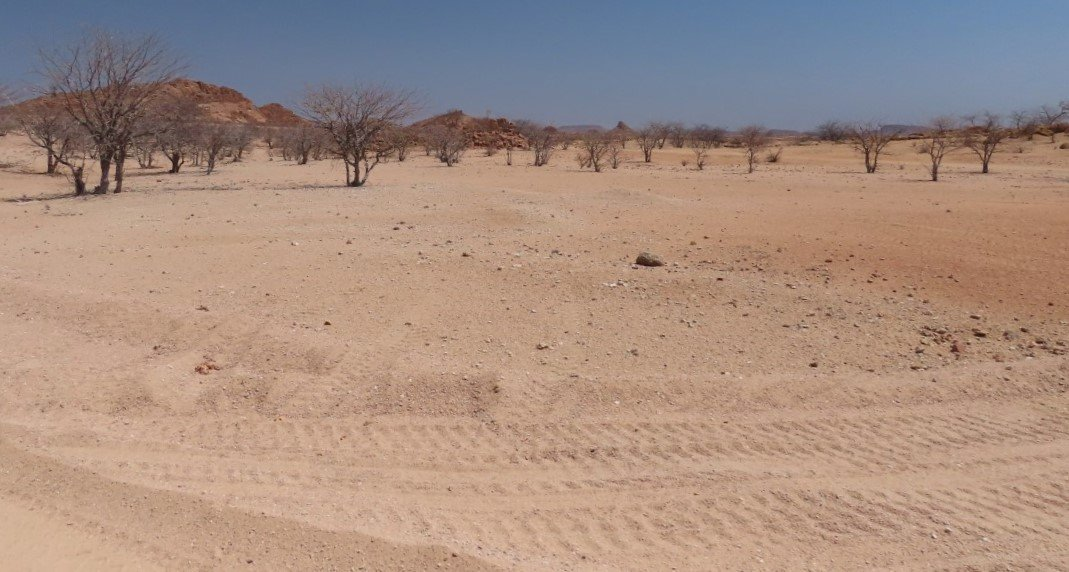
About 30km before Khorixa, we turned off to the Petrified Forest National Park. As in many of Namibia’s National Parks, you cannot walk on your own, you have to be accompanied by a guide.
Naïve as we were, we were expecting a “forest” … with standing trees. (Yes we were very naïve). This area comprises trees and parts of trees that have washed down with glaciers millenia ago when all the continents were still connected. Most of what we saw were bits and pieces. Some looked like pieces of stone while others were indeed recognizable as bark or tree rings. Our guide pointed out some parts of trees where the petrification had evolved to the level of actually developing crystals inside the wood.
There were a few tall trees lying half buried in the soil and one could only imagine how many of these petrified trees might be hidden in layers below the trees that have been exposed.
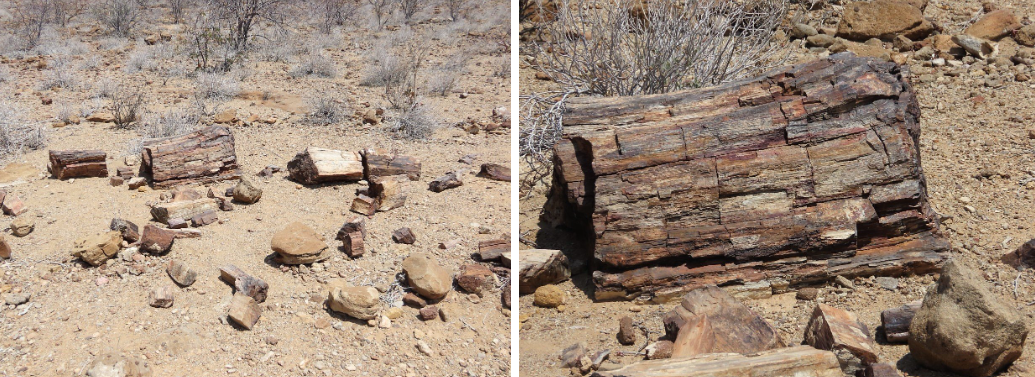
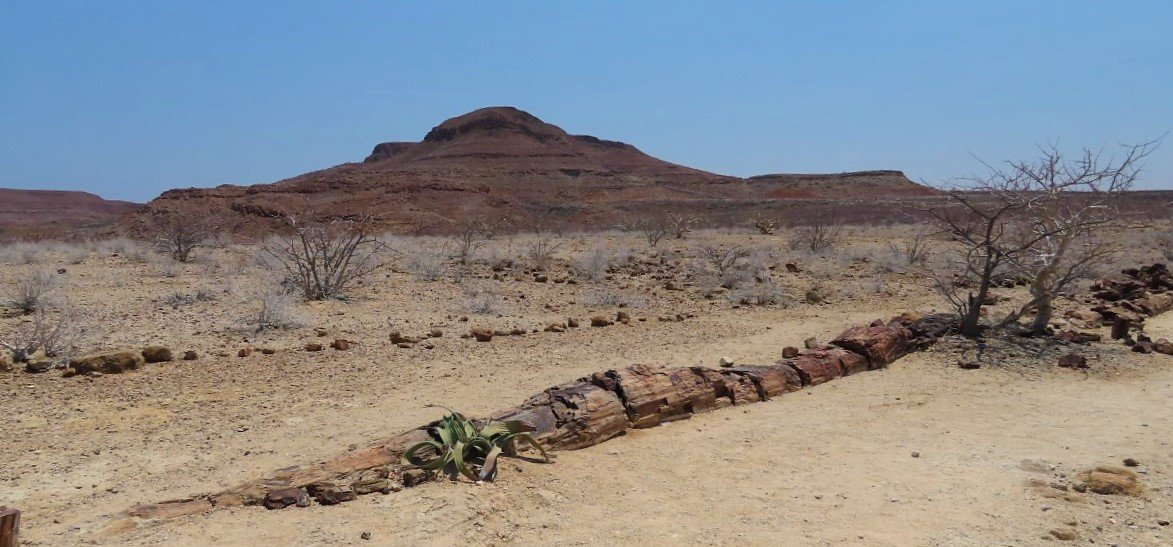
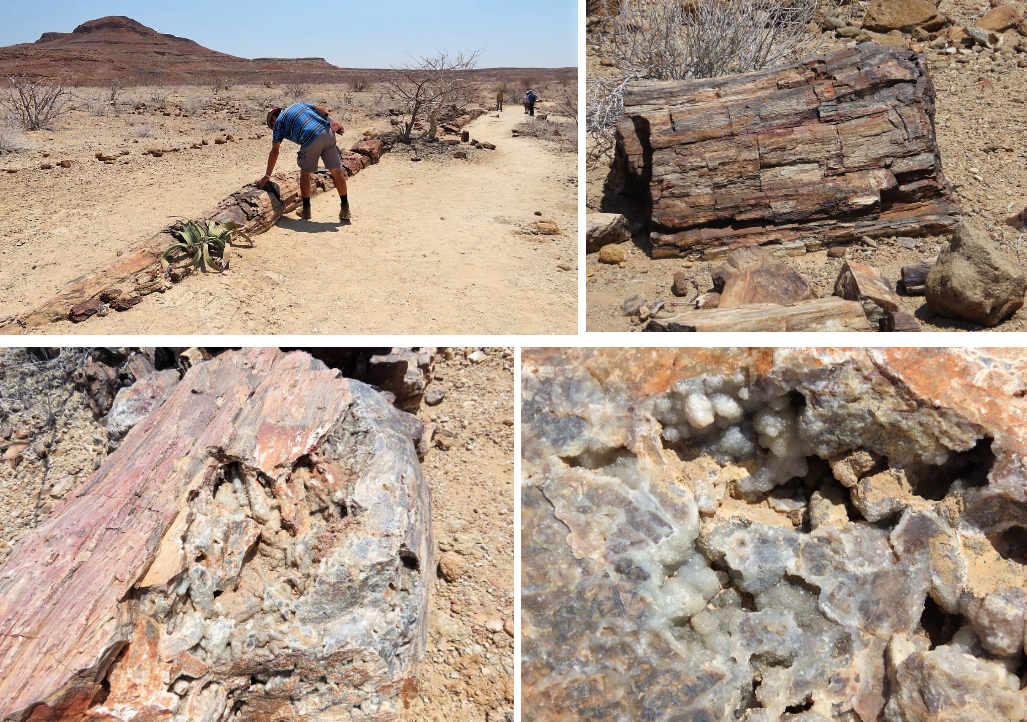
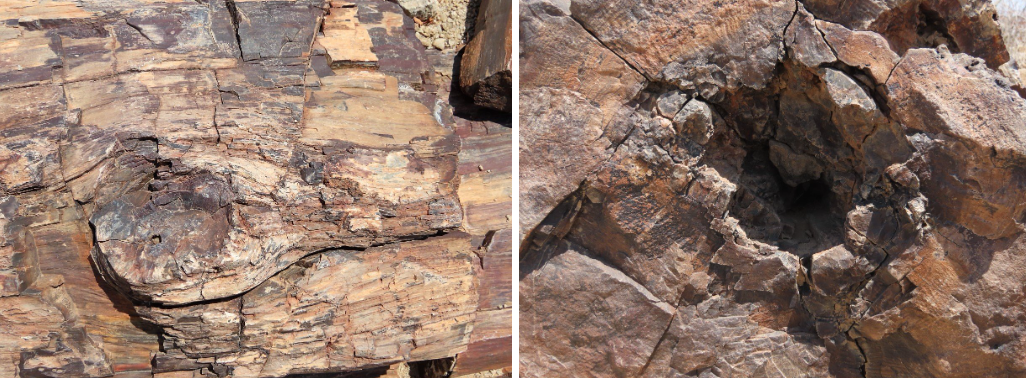

After our visit to the Petrified Forest we drove to Khorixas, where we wanted to fill up with diesel. When we pulled up at the petrol station, guess who we found there: Moglet! Fair enough… there are limited roads in that part of the world and once you’ve decided to travel in the same direction, you’re bound to run into each other.
After petrol, water, shopping etc, we looked for a cool spot to camp. We found a riverbed, made a fire and enjoyed a braai and a glass of wine (and cold beers for the guys).
We had a small indaba (meeting) around the fire and discussed a route going north towards the Epupa falls near the Angolan border.
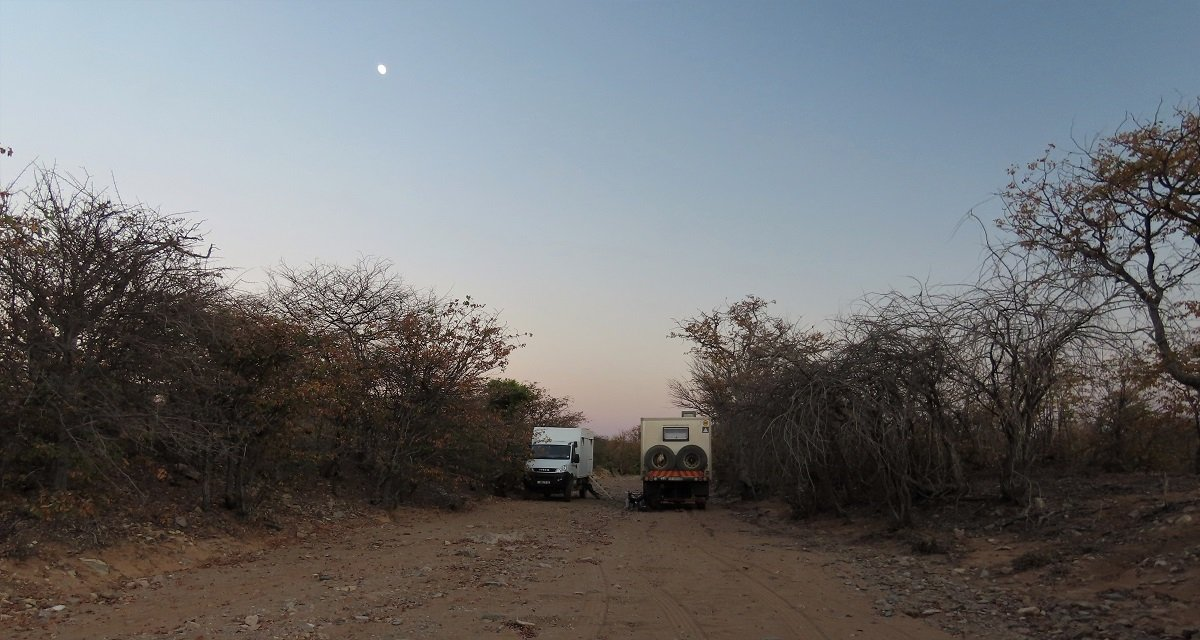
Enjoy the video.
For more photos, clips and videos follow us on


Rhino tracking and river bashing